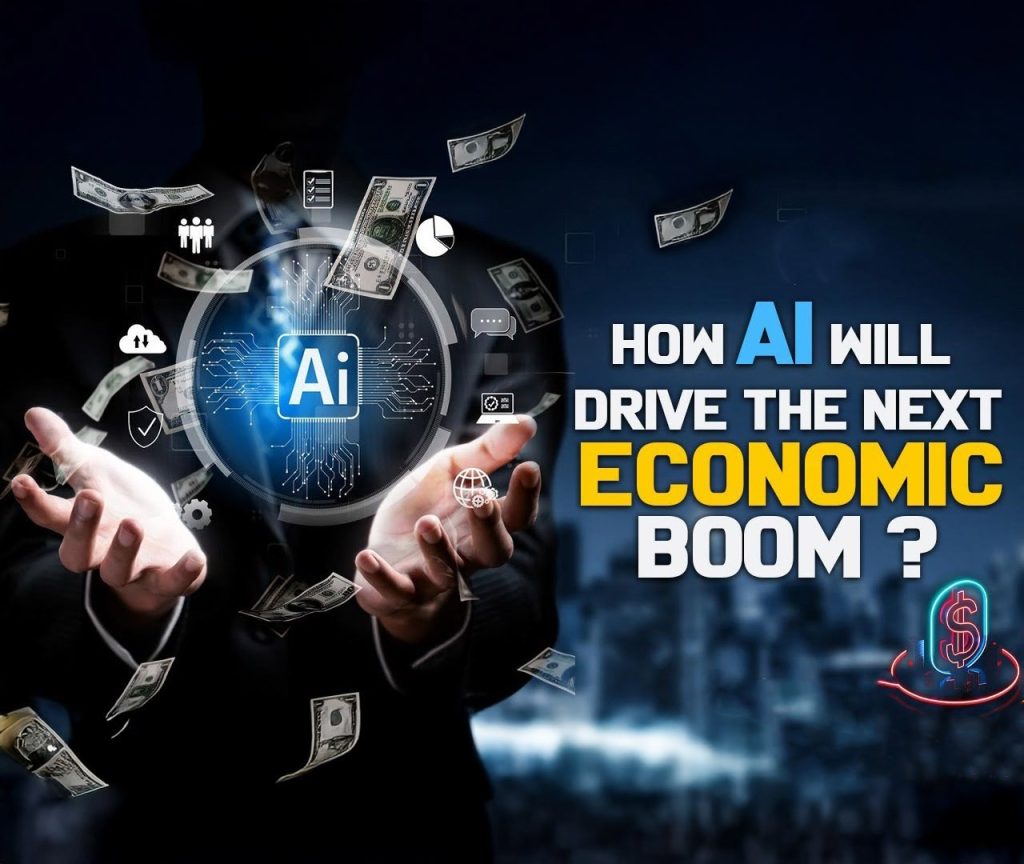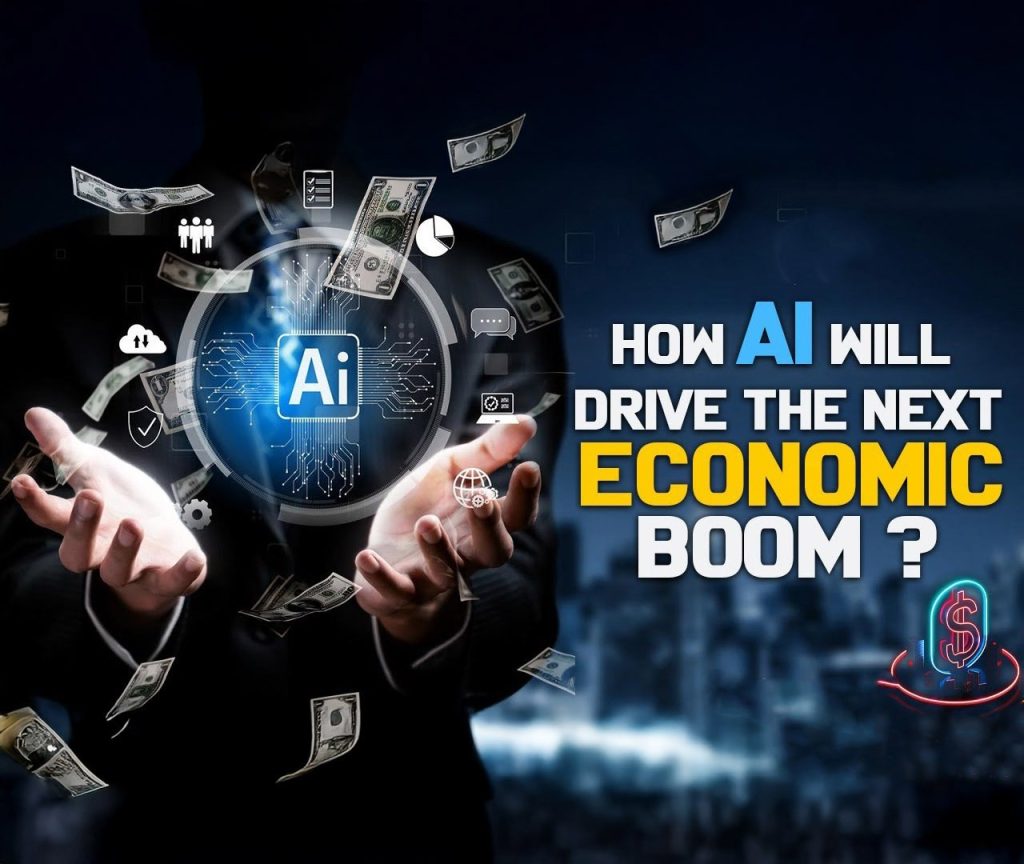Game-Changer in Economic Growth: How Large AI Models Could Revolutionize Economic Forecasting
Imagine a world where economic forecasts are as accurate and timely as weather reports. Where investment strategies are powered by data-driven foresight, and economic growth is directed by algorithms that learn and evolve. That world is no longer far off—it’s emerging now, thanks to large AI models.
Why the Economy Needs Large Quantitative AI Models
The global economy is more interconnected—and more unpredictable—than ever before. From volatile markets to disrupted supply chains, traditional economic forecasting tools often struggle to keep up with the sheer speed and complexity of change. These legacy models rely heavily on human judgment and limited datasets, which can lead to blind spots and delayed reactions during crises (Mullainathan and Spiess).
But what if we could do better? What if we had tools capable of processing millions of data points in real time, detecting patterns invisible to the human eye, and simulating economic scenarios with near-scientific precision?
The Rise of AI in Economics
Artificial intelligence is already revolutionizing fields like healthcare, logistics, and cybersecurity—and now it’s transforming economics. Large-scale quantitative AI models can analyze massive datasets, extract patterns, and generate remarkably accurate forecasts. These systems are powered by advanced algorithms like deep learning and neural networks, which simulate countless economic conditions to help policymakers and businesses make smarter decisions (Varian).
In one compelling study, an AI model outperformed experienced economists in predicting the onset of financial crises. The model correctly identified subtle indicators of instability that had gone unnoticed by traditional approaches (Athey et al.).
How Do Large AI Models Work?
At their core, large AI models rely on data—lots of it. These models are trained on decades of historical data, real-time market analytics, global trade flows, and behavioral indicators. Machine learning techniques allow these systems to adapt as new data is introduced, improving accuracy with each iteration.
Think of it as having a supercharged economic advisor at your fingertips—one that never sleeps, never forgets, and constantly learns.
By recognizing hidden relationships between variables like inflation rates, interest changes, consumer behavior, and geopolitical shifts, AI can forecast outcomes and even suggest optimal strategies for growth (Brynjolfsson and McAfee).
Real-World Impact: Finance, Logistics, and Beyond
This isn’t just theoretical. AI-powered forecasting tools are already in use across industries:
- Finance: Predicting stock market trends, managing portfolio risk, and optimizing asset allocation.
- Supply Chains: Forecasting demand, identifying bottlenecks, and enhancing delivery routes.
Healthcare and Policy: Planning for pandemics, managing insurance risks, and anticipating shifts in public health spending.
According to a survey by PwC, businesses leveraging AI for economic forecasting reported up to 20% higher returns on investment and improved operational efficiency (PwC). In another study covering 200 global firms, over 80% reported increased revenue and productivity through AI-driven insights (Deloitte).
The Ethical Dimension: Challenges and Considerations
While the benefits are clear, large AI models come with serious responsibilities. Concerns over data privacy, algorithmic bias, and job

displacement are real. Models trained on biased or incomplete data can reinforce inequalities or lead to flawed decision-making.
It’s vital to approach this technological shift with ethics at the forefront—ensuring fairness, transparency, and inclusivity in every algorithm deployed. Governments and companies must invest in regulatory frameworks, ongoing oversight, and interdisciplinary collaboration to avoid unintended consequences (Crawford).
A Glimpse into the Future
The future of AI in economics is bright—and it’s arriving faster than many expected. As these models mature, they’ll not only become central to forecasting but also reshape how we define economic intelligence. From international trade to household budgeting, AI will influence every layer of the financial world.
The question now isn’t whether AI will revolutionize economics—it’s whether we’re ready to embrace its full potential for the collective good.
Large AI models represent a monumental leap forward in economic forecasting. Their ability to interpret vast data landscapes, anticipate shocks, and suggest proactive strategies could lead to a more stable, resilient, and inclusive global economy. The transformation is underway—and it’s up to us to shape it responsibly.
For further assistance, visit our channel and refer the video
Game-Changer in Economic Growth: How Large AI Models Could Revolutionize Economic Forecasting

References
- Guu, Kelvin, et al. “REALM: Retrieval-Augmented Language Model Pre-Training.” Proceedings of the 37th International Conference on Machine Learning, 2020.
- Izacard, Gautier, and Edouard Grave. “Leveraging Passage Retrieval with Generative Models for Open Domain Question Answering.” Advances in Neural Information Processing Systems, 2021.
- Karpukhin, Vladimir, et al. “Dense Passage Retrieval for Open-Domain Question Answering.” Proceedings of the 2020 Conference on Empirical Methods in Natural Language Processing (EMNLP), 2020.
- Lewis, Patrick, et al. “Retrieval-Augmented Generation for Knowledge-Intensive NLP Tasks.” Advances in Neural Information Processing Systems, 2020.
Share This :

